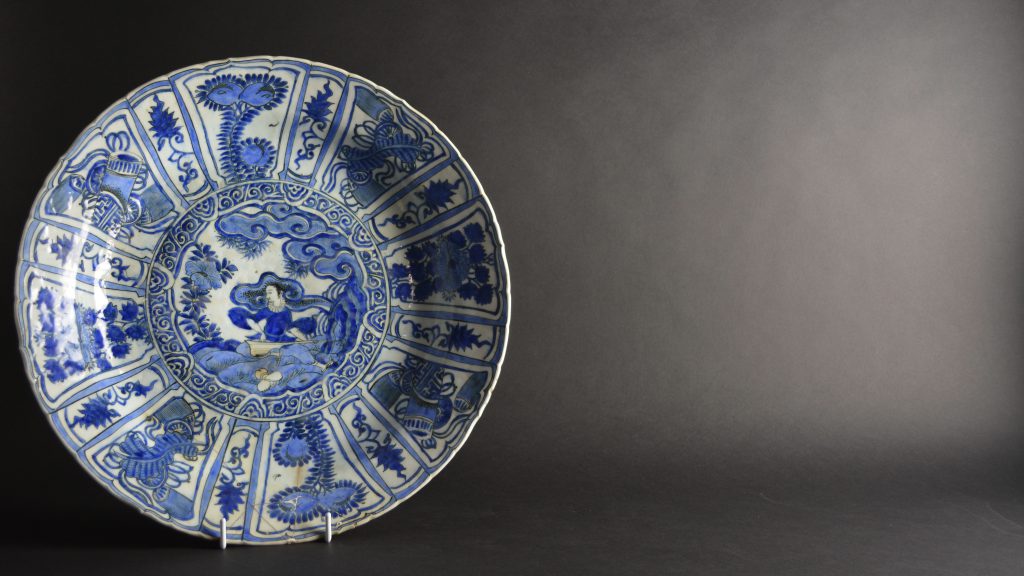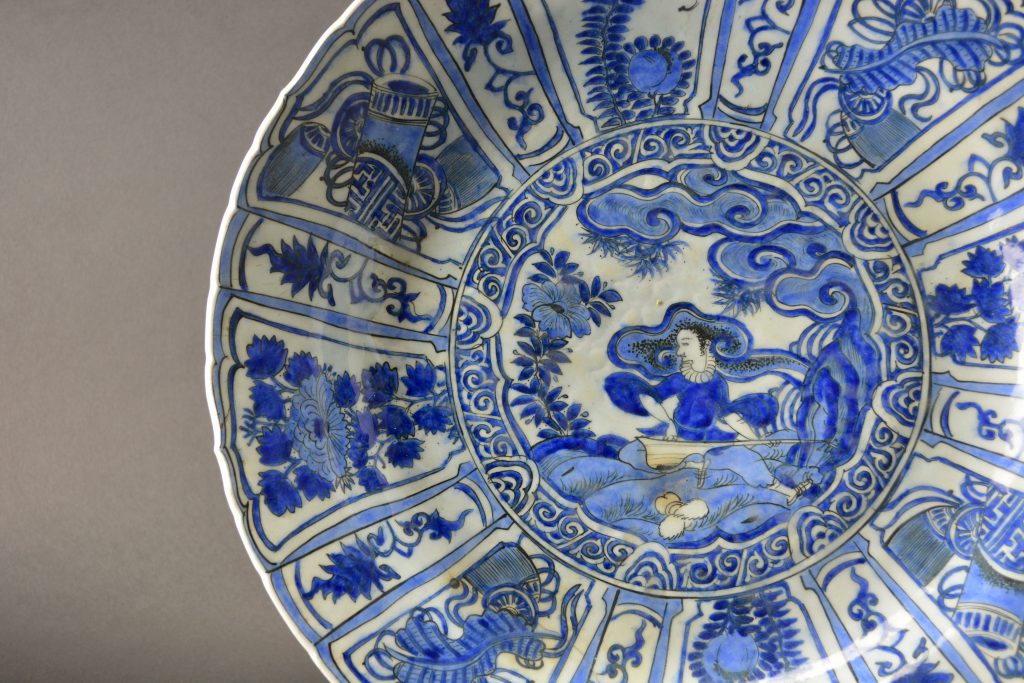
A Massive 17th Century Safavid Kraak Ware Style Dish
A Massive 17th Century Safavid Kraak Ware Style Dish, Safavid Dynasty c.1620 – 1650. This rare dish imitating Late Ming Kraak porcelain is fritware (see information below the photographs). This dish is painted after fine quality Chinese Kraak porcelain, the details, including small dots and fine brushwork are derived from the Chinese original. However, this version of Kraakware differs in that black has been used as well as cobalt lines and dots. The scene within the context of typical Kraakware borders is of a refined man with a decorative collar playing a stringed instrument, probably a Dutar. Sha Abbas the Great who reigned from 1587 to 1629 was a contemporary of Wanli (1573-1620), promoted the ceramic industry in Persia and collected ceramics from China. It was said that he invited several hundred Chinese potters to migrate to Persia and settle there. This is unsubstantiated and certainly the secret of ‘true porcelain’ did not make it to the Persian potters.
For more information about Kraak Ware porcelain you can go to the History section of our website-menu, or click on the link: Kraak Ware Porcelain.
SOLD
- Condition
- There is an a area of repair to the lower part of the dish.
- Size
- 45 cm (17 3/4 inches)
- Provenance
- N/A
- Stock number
- 25927
- References
- For a similar Perian Kraak style dish at the Victoria and Albert Museum see the information below the photographs. It is illustrated in Y. Crowe, Persia and China: Safavid Blue and White Ceramics in the Victoria and Albert Museum 1501-1738, (London: Thames & Hudson, 2002).
Information
Persian Fritware :
This is a curious material which is classified as a type of pottery, fritware began in Iraq in the 9th century. It is also known as stone-paste, ground glass (frit) is added to clay. Other ingredients include gum to bind the material, quartz or other siliceous material. These enables the kiln temperature to be lowed. The fired body is hard, porous and very fragile, glaze helps strengthen the object but still the result is fragile, prone breaking and staining. However, it was more durable than other types of low-fired pottery and perhaps most importantly the appearance produced is of a good clear white. This made it idea for Persian copies of Chinese porcelain to be made.

Historical significance: From the last quarter of the 16th until the mid 17th Century, Chinese dishes with petal panels were common export wares. The striking effect of the new style of decoration made the design popular not only with the Persian potter, but also across western Europe. The design originated in the Tang dynasty when the flattened petals of the lotus decorated Buddhist paintings, stone tiles and various artefacts. These panels vary in number but they are usually six or eight, according to the size of the dish. Flowers, fruit, birds and sacred emblems were adopted as decorations and the simplified leafy peach motif became especially popular in both China and Persia. In the 17th Century, Persian potters reinterpreted the human figures copied from Chinese models in a comic manner.



































